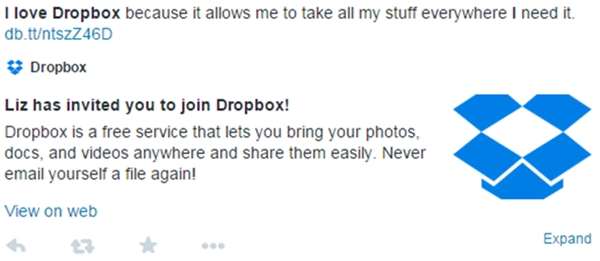With over two billion of active users, social media networks are an excellent means of promoting your brand and accelerating business growth.
Unless, of course, you're doing it wrong.
Some 61% of SMBs report success with gaining new customers via social media, according to research (PDF). That means, however, another 39% do not; that is, they fail to turn likes and shares into the metrics that justify their business goals—i.e., they fail to convert.
Sitting and waiting for a moment when all such engagements will start translating into purchases is not a viable strategy, of course. Because strategy involves analysis, planning, and, above all, understanding the ways users can be directed to the sales funnel.
To understand how fans can be turned into consumers, great brands invest time and money analyzing their fans' needs and behavioral tendencies. That's because converting social media fans requires more than constant sharing; it requires understanding the ways they interact and build relationships.
It's social media, after all.
People are rational (sort of)
Reason is a primary characteristic of human beings. It plays a vital role in most decisions we make in our daily lives. Similarly, your social media fans may still be seeking a reason to finally try your product or service, or click on your call to action.
People are more likely to respond to certain requests when they are given an actual reason, however nonsensical it may be, a study by Ellen Langer of Harvard University discovered.
The simple experiment shows that out of the following set of sentences, the two containing the word "because" more effectively make people complete the specified action:
"Excuse me, I have five pages. May I use the Xerox machine, because I'm in a rush?" "Excuse me, I have five pages. May I use the Xerox machine? "Excuse me, I have five pages. May I use the Xerox machine, because I have to make copies?"
In a marketing context, this is related to the notion of value proposition, which aims to demonstrate a benefit that users gain by doing or buying something. The slogans of various brands obviously refer to such an approach, with Loreal's Because You're Worth It being an absolute winner in this respect.
A similar psychology may be applied to social media to encourage various types of engagement—from clicking on posts, to joining a community, to subscribing for a newsletter or buying a product.
Accordingly, try adding a single "because" or something that resembles a reason behind your request and see what happens.
Consider the example of Dropbox, which encourages users to tweet why they love the service, in return for receiving additional storage space. Once you connect your Twitter account to it, it shares a tweet like this:

Reciprocity translates into loyalty
Another common social norm applicable to marketing via Twitter or Facebook is the one suggesting that people feel obliged to help someone who has previously helped them. In practice, the reciprocity norm allows you to do the following:
- Ask for something in return, rather than having to wait for a voluntary reciprocal act.
- Ask for more than was given. You can even exchange a smile for money.
In the realm of social media, this means companies need to establish a two-way interaction before they ask for anything from their users. A fan, therefore, may be more likely to respond to the company's request if it previously helped him or her solve a specific problem or get an answer to an industry-related question. Simply, help your audience by...
- Sharing informative content
- Answering their inquiries promptly
Afterward, they will feel they owe something to your social page, and persuading them to do something for you (complete a survey, sign up for a free trial, etc.) could be much easier.
A great example of a company that used a similar tactic in their social media strategy is Madewell, which launched a #totewell campaign encouraging users to share their images with the brand's totes and get a chance to be featured in the company's ads. Long after the campaign was over, people kept posting their photos across social media networks, having become true brand evangelists.
A sense of urgency drives action
The well-known sense of urgency has long been used to design efficient call to action buttons on websites, but it is often overlooked in social media strategies—unfortunately, because its application may extend well beyond copywriting.
If you've ever wondered why limited-time offers and promotions on social networks work, here's your answer.
Just as with regular promotions, if people think they may miss out if they do not react quickly, they are more likely to complete an action without giving too much thought to it. Facebook, for example, recommends adding urgency to the copy using the prompts like "free shipping, this weekend only," "12 hour flash sale," and "two days left" to drive more engagements.
Though such a way to inspire a sense of urgency will work for actual promotions or holiday offers, you can also create an implied sense of urgency by adding words like "now," "today," etc. to common statements.
Consider: "Sign up for our newsletter and start discovering a world of marketing" vs. "Sign up for our newsletter and start discovering the world of marketing today."
The efficiency of such headlines was proven in a series of tests that Marcus Taylor of Venture Harbour carried out. He explains that implementing the sense of urgency into his marketing campaigns helped him increase sales 332%, and he recommends tailoring offers as follows:
- Increase clarity
- Increase relevancy
- Improve value proposition
- Reduce anxiety
- Reduce distractions
- Add urgency
Curiosity makes people want to discover more
When people see a gap between what they know and what you promise they can learn, they are more likely to follow their innate need to find out more. An experiment by fMRI found that that people's brain activities increase when faced with a question that triggers their curiosity, which makes them more engaged with a specific topic.
Other studies find that the gap can be reduced by addressing the problem directly, as is the case with Presidential-campaign TV debates, the goal of which is to inform people about specific problems and thus make them more confident about their choices.
However, in branding, especially via social media campaigns, companies need to reach a proper balance between transparency in relation to product information and a sense of mystery associated with the benefits of using it. For example, by combining informative posts with those that put your fans' curiosity to work, companies can achieve the right effect. Also, the approach could be combined within a single post or ad in order to grab the audience's attention and drive conversions.
* * *
On social networks, a company presence that is developed strategically with content that applies some basic lessons of psychology is likely to provide some real business benefits.




